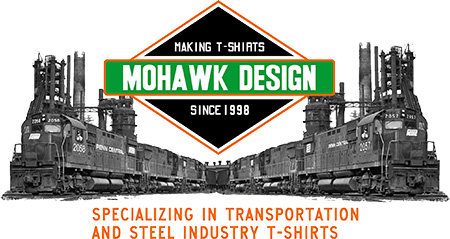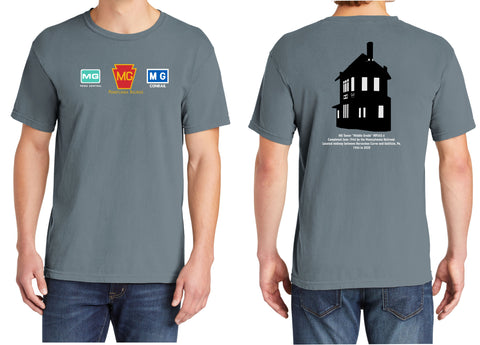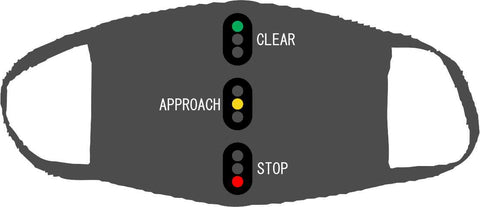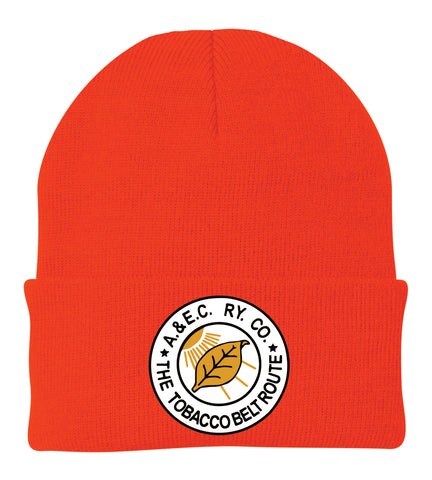
Uintah Railway China Logo Shirt
Uintah Railway China Logo Shirt
- Logo Printed on Front
- 100% Cotton
- Shirt Color = Jet Black
The railway company was founded in 1903 as a wholly owned subsidiary of the Gilson Asphaltum Company. Construction began at a connection with the Denver and Rio Grande Western Railroad at what became known as Mack, Colorado. Twenty-eight miles of track was laid following West Salt Wash Creek upstream to the company town of Atchee, Colorado, named after a chief of the Ute people. Atchee served as a division point with maintenance shops for railway equipment. From Atchee, six miles of 7.5 percent grade were required to climb the Book Cliffs to Baxter Pass at an elevation of 8,437 feet (2,572 m). From the summit of Baxter Pass, there were seven miles of 5 percent downhill grade to Wendella, Colorado, followed by twelve miles of 3 percent or shallower grades down Evacuation Creek to the Black Dragon Mine just west of the Utah border. The Black Dragon Vein of Gilsonite was exposed across the ground surface for a distance of 4 miles (6.4 km), and averaged 6 feet (1.8 m) wide for half of that distance. Trains began hauling Gilsonite from the Black Dragon Mine in October, 1904. Shay locomotives pulled freight trains over Baxter Pass between the Dragon Mine and Atchee, and 2-8-0 engines pulled the freight trains between Atchee and Mack.[4]
Ten miles of track were laid in 1911 on a one percent grade down Evacuation Creek from Dragon, Utah, to the Rainbow Mine near Watson, Utah. A new 2-8-2 locomotive was built to pull freight trains between Watson and Wendella. The new locomotive was more efficient than Shay locomotives on that section of track, but it could not negotiate the steep grades and sharp curves over Baxter Pass between Wendella and Atchee.[5] The railroad had operated passenger trains since 1905 consisting of a 0-6-2 tank locomotive pulling a single combine car between Mack and Dragon or Watson. This passenger train service was discontinued in 1921.[6]
For much of the 1920s the Uintah was headed by Lucian Sprague, a railroad executive who later became well known for orchestrating the dramatic turnaround of the bankrupt Minneapolis and St. Louis Railway.[7] In 1926 the railroad purchased an articulated locomotive, #50, which was specifically designed to handle the extreme curvature and steep grades of Baxter Pass. The idea was that this new locomotive would do away with the need to change engines at Atchee and Wendella. The single articulated locomotive could move as many cars as two Shay locomotives from Rainbow to Atchee and made the trip in half the time. After some initial modifications, this engine proved to be such a success that in 1928 the railroad purchased a sister locomotive, #51. These were the only narrow gauge simple articulated locomotives sold for use in the United States.[8]
The railroad lasted until 1939 when trucks took over hauling the Gilsonite. At that time, the rails were pulled up and the towns abandoned. Most of the railway's locomotives were scrapped immediately; the two famous articulateds were sold to the Sumpter Valley Railway in Oregon and later went to Guatemala, where they were dismantled. Today all that remains of the Uintah are the cellar pits of some of the buildings, the shell of the machine shop in Atchee, a few pieces of rolling stock and part of the company hotel in Mack.
*Image is a representation and may not be exact




